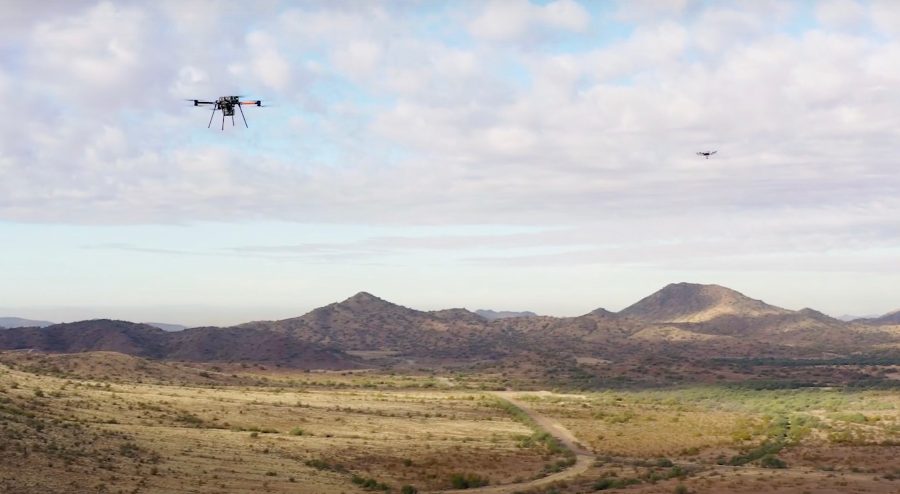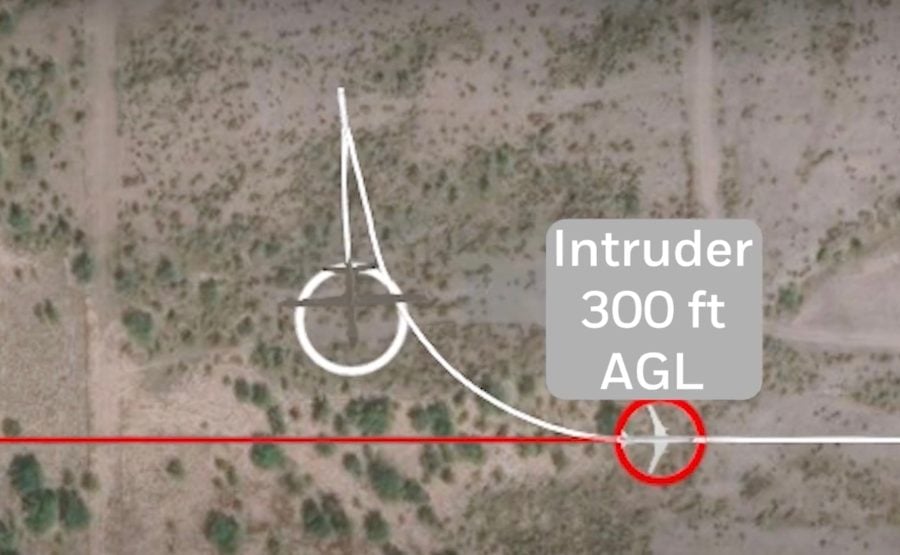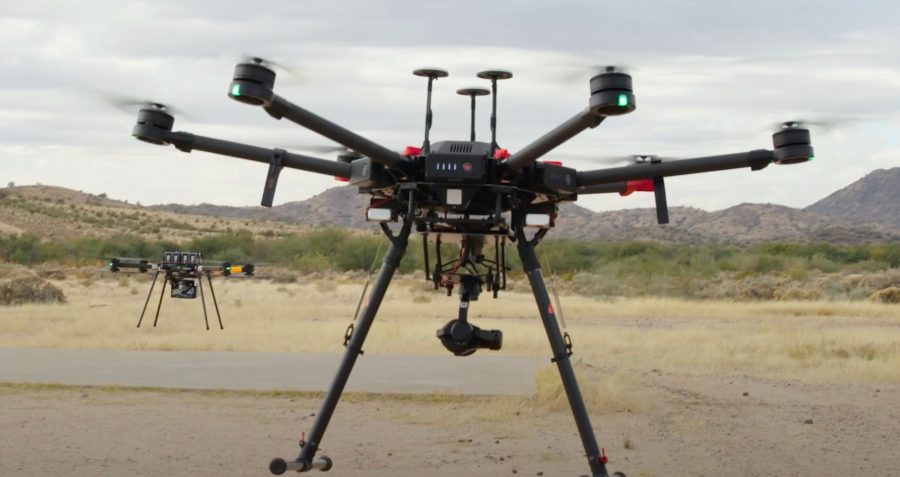Autonomous Dodgeball—Drone Radar Avoids Intruder Aircraft on Its Own
BY Zacc Dukowitz
15 February 2022In a recent series of tests conducted in Phoenix, a drone flown autonomously by Honeywell’s radar system was able to swerve quickly around an intruder aircraft.
The tests were set up as a game of dodgeball in the sky, with the intruder drone locking in on a collision course with the test drone—but it detected and avoided it every time.

The tests began with the two drones flying into the sky on autopilot at a short distance from each other. Once their positions were established at about 300 feet in the air, they flew at each other at high speeds.
Using Honeywell’s radar technology, the drone outfitted with Honeywell’s radar detected the oncoming intruder drone, calculated its flight path, and then autonomously flew to safety—flying left, right, up, down or stopping midair, depending on winds and other factors.
We set up the ultimate game of ‘chicken,’ but the [radar] simply wouldn’t let these aircraft get into danger. This is a leap forward in safety that could have far-ranging impacts across aviation.
– Sapan Shah, Product Manager at Honeywell Aerospace
After avoiding the intruder, the drone returned to its original flight plan.

Watch this video to see the tests performed live:
Self-Flying Drones and Air Taxis
These tests demonstrated that Honeywell’s IntuVue RDR-84K radar system, which was created to autonomously pilot drones and other types of vehicles, can identify airborne traffic and decide on its own how to avoid colliding with it.
Why does this matter?
Because this technology is crucial for the development of self-flying drones and advanced air mobility vehicles—commonly called air taxis.
The purpose of running these threats is really to emulate some of the threats that will happen between a drone and a manned vehicle . . . it’s a very complex algorithm that we’re implementing today.
– Larry Surface, Lead Scientist
When it comes to making vehicles that can fly themselves, creating technology that allows them to avoid unforeseen objects in the sky has been one of the most important aspects of the technology, and the most elusive.
Commonly referred as detect-and-avoid technology, engineers face several challenges in its development, including:
- Developing long-range radars to account for the high speeds involved.
- Distinguishing airborne traffic from background noise on the ground, like moving cars.
- The requirement for precise locational information to make sense of radar echoes.
All of these challenges relate to detecting the threat.
For crewed airplanes and helicopters, these challenges have a simple solution—they carry transponders that telegraph their location to other aircraft in the area.
Drones have started carrying these transponders as well. DJI, for instance, has been putting ADS-B receivers on any drone that weighs more than 250 grams since the start of 2020.
But when it comes to developing technology to both detect and avoid other aircraft, engineers have to develop technology that can detect all aircraft in the surrounding sky, not just craft that’s carrying a transponder.
You can imagine how much the complexity increases when you go from just trying to detect a threat to also finding a way to autonomously avoid it. The system must be able to calculate the path of the oncoming aircraft and quickly find a way to avoid that path.
And that’s exactly what Honeywell’s radar did in these tests.
It’s important to note that this technology isn’t just limited to drones—larger eVTOL vehicles can also be piloted with this radar, as can ground- or marine-based vehicles operating autonomously.
How the Radar Detect-and-Avoid System Works
Here’s how the test drone was piloted during these recent tests in Phoenix:
- The drone begins on autopilot, flying a planned flight path.
- A radar attached to the drone constantly scans the skies for threats while it’s flying.
- When the radar detects an intruder, it takes over operation of the drone.
- The radar calculates the safest path to avoid the oncoming aircraft, then takes that path to avoid a collision.
- After the drone is safe, the radar returns control of the drone to autopilot, and the drone returns to its original flight plan.


Here’s a little more information about the Honeywell RDR-84K radar used in these tests:
- It’s quite small, weighing less than two pounds.
- It can “see” targets that are up to 5.6 miles (3 kilometers) away.
- It uses monopulse technology—a system of overlapping beams—to increase accuracy and eliminate ground clutter.
- It has no cooling system and no moving parts—the radar steers its beams electronically.
- It can detect traffic, map terrain, and provide alternate navigation (in the case of GPS failure).
Watch this video to learn more about the RDR-84K:


Watch this video on YouTube


